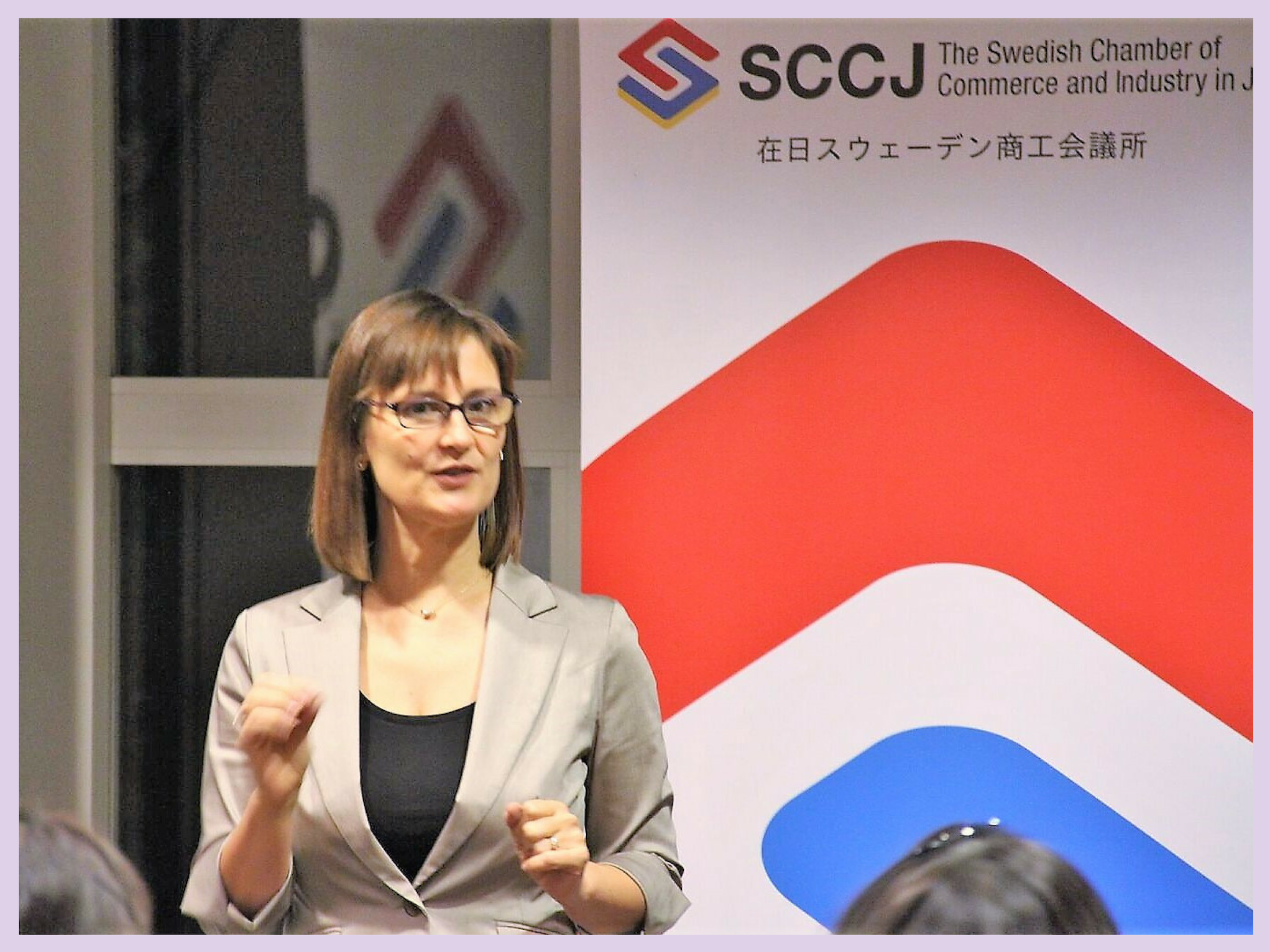The less you need to think about what you’re saying in your presentation, the more you can focus on the audience. This makes a great presentation.
So today I’m sharing 7 presentation situations and related English phrases that you can use regularly.
1. Self-introduction
When you’re introducing yourself, you can say, “I’m…” or “My name is…”
This may seem obvious, but many Japanese presenters start with “This is…”
You use “This is…” when you introduce yourself on the phone, but not in person.
When you’re introduced by someone else, you can simply say, “Thank you” or “Thank you for the kind introduction.”
Sometimes presenters directly translate the standard Japanese introduction – ただいまご紹介に預かりました岩田ヘレンです – and say something like “I’m Helen Iwata who was just introduced.” This isn’t natural English and you don’t need to repeat your name.
2. Agenda
Audiences are easily distracted these days, so it’s often helpful to give them an overview of what you’ll cover in your presentation. List all the topics together at the beginning and keep them short, so that they’re easier for both you and your audience to remember.
For example, “I’d like to cover three topics in this presentation: the project background, our current issues, and our proposed solutions.”
For extra engagement, you can also indicate the three topics raising your hand and using your fingers. Raise your index finger for the first topic, your middle finger for the second topic, and your ring finger for the third topic.
3. Timing
People are busy, so give the audience an idea of how long you’ll talk for.
For example, “I’ll take around 10 minutes for each topic, totalling around 30 minutes.”
4. Questions
Let your audience know whether they can interrupt you with questions or should wait for a Q&A section at the end.
For example, “I plan to leave 10 minutes for questions at the end, so I’d appreciate it if you could hold your questions until then”
or “I’m happy to take questions at any time during the presentation.”
5. Handouts
If you’re using handouts, check that everyone has one. In a seminar or conference, it may be difficult to see, so you can use these phrases:
“Please check that you have a handout.”
“More handouts are available by the door.”
6. Breaks
If you have a long presentation, it’s good to give your audience breaks to refresh, so that they can concentrate on what you’re saying. This can also be a time for them to check their phones, so they’re not distracted during your presentation.
Let them know at the beginning of the presentation that they’ll have this opportunity.
“We’ll take a 15-minute break about half-way through the presentation.”
7. Slides
When introducing each slide, clarify what it’s about. The slide may be obvious for you as the presenter, but not for the audience seeing it for the first time.
Then if you have multiple elements on your slide, make it clear for your audience where to look. For example, “In the top left/top right/bottom left/bottom right, you can see…”
Remember to include a phrase to transition from one slide to the next. For example, “Now that we’ve identified the issues, let’s look at the possible solutions.”
Transitions help the audience to follow your logic and remember more of your presentation. They will also help you to remember your own content!
I hope these phrases help you to focus on your audience and improve the impact of your presentations.
If you have questions about English phrases or other techniques for presentations, post them in the Comments below.
Are you keen to learn how to give clear, confident, and compelling presentations? Learn more about the Speak Like An Expert Online self-study presentation skills course here.
Photo credit: Many thanks to the Swedish Chamber of Industry and Commerce in Japan for the photo and for inviting me to speak. You were a fabulous audience!!!

